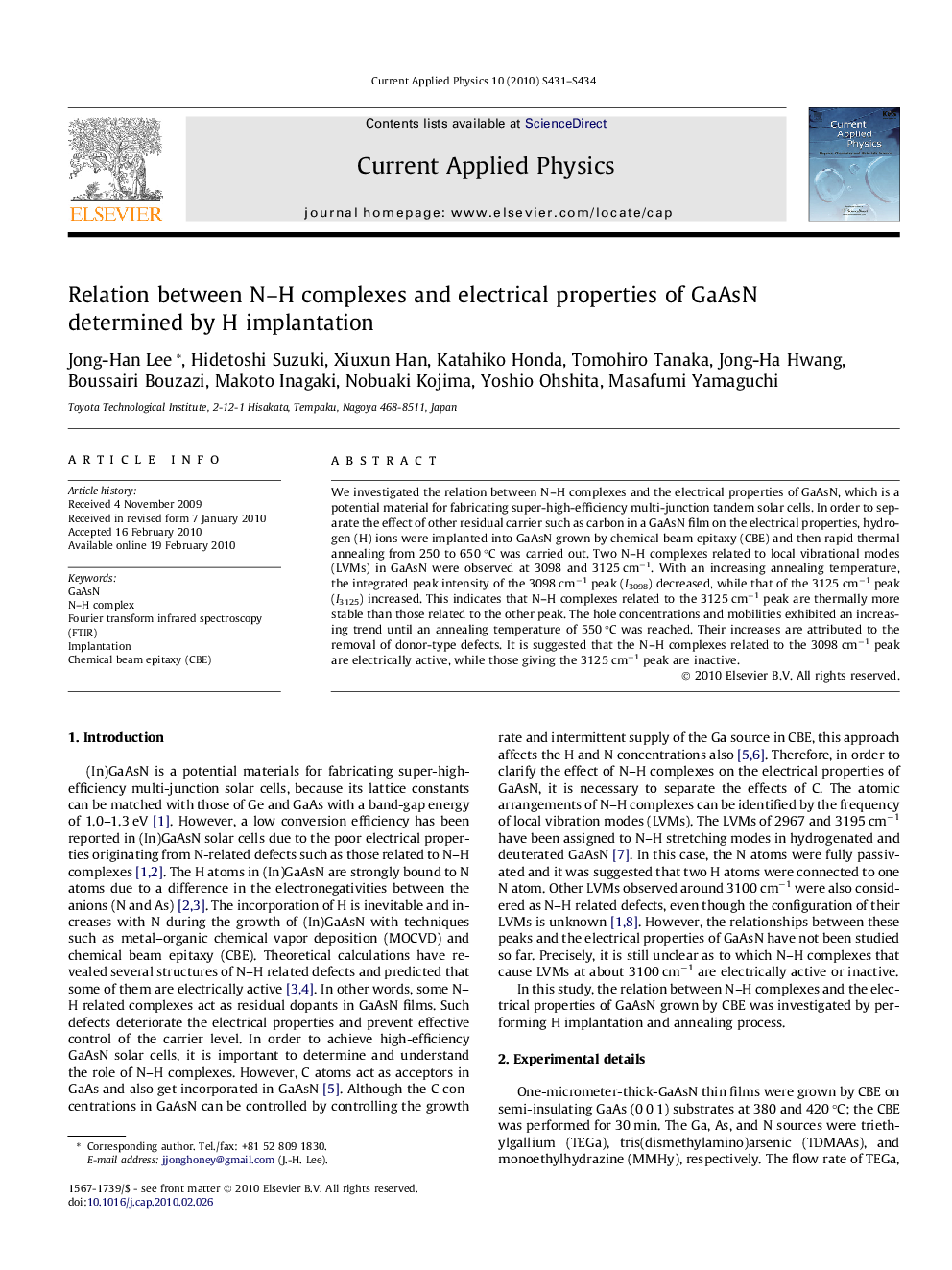| Article ID | Journal | Published Year | Pages | File Type |
|---|---|---|---|---|
| 1788793 | Current Applied Physics | 2010 | 4 Pages |
Abstract
We investigated the relation between N-H complexes and the electrical properties of GaAsN, which is a potential material for fabricating super-high-efficiency multi-junction tandem solar cells. In order to separate the effect of other residual carrier such as carbon in a GaAsN film on the electrical properties, hydrogen (H) ions were implanted into GaAsN grown by chemical beam epitaxy (CBE) and then rapid thermal annealing from 250 to 650 °C was carried out. Two N-H complexes related to local vibrational modes (LVMs) in GaAsN were observed at 3098 and 3125 cmâ1. With an increasing annealing temperature, the integrated peak intensity of the 3098 cmâ1 peak (I3098) decreased, while that of the 3125 cmâ1 peak (I3125) increased. This indicates that N-H complexes related to the 3125 cmâ1 peak are thermally more stable than those related to the other peak. The hole concentrations and mobilities exhibited an increasing trend until an annealing temperature of 550 °C was reached. Their increases are attributed to the removal of donor-type defects. It is suggested that the N-H complexes related to the 3098 cmâ1 peak are electrically active, while those giving the 3125 cmâ1 peak are inactive.
Related Topics
Physical Sciences and Engineering
Physics and Astronomy
Condensed Matter Physics
Authors
Jong-Han Lee, Hidetoshi Suzuki, Xiuxun Han, Katahiko Honda, Tomohiro Tanaka, Jong-Ha Hwang, Boussairi Bouzazi, Makoto Inagaki, Nobuaki Kojima, Yoshio Ohshita, Masafumi Yamaguchi,
